AI in the Classroom: Ways Teachers Use AI tools today

With AI tools becoming more accessible, teachers have new opportunities to enhance their teaching practices and encourage better student learning. So what ways can artificial intelligence assist teachers and enhance learning?
AI can be used in the classroom to create teaching materials, brainstorm and develop engaging student activities. It can also help plan lessons, design curriculums, and assess student work.
Here are some real-world examples of how a teacher is integrating ai in the classroom.
Use Artificial Intelligence to make teaching materials
Donnie Piercey had a genius idea - he wanted to use ChatGPT to create some killer teaching material about the butterfly life cycle. Donnie was Kentucky’s Teacher of the Year 2021, and he knows that using technology in the classroom is the key to keeping his students engaged and excited about learning, and he thought ChatGPT would be the perfect tool to make it happen. Here’s how this experiment turned out.

He decided to set aside just ten minutes of his day to jump on ChatGPT and create some amazing teaching material.
Input Prompt: write a 5 paragraph essay about the life cycle of a butterfly. make it written at the first-grade level.
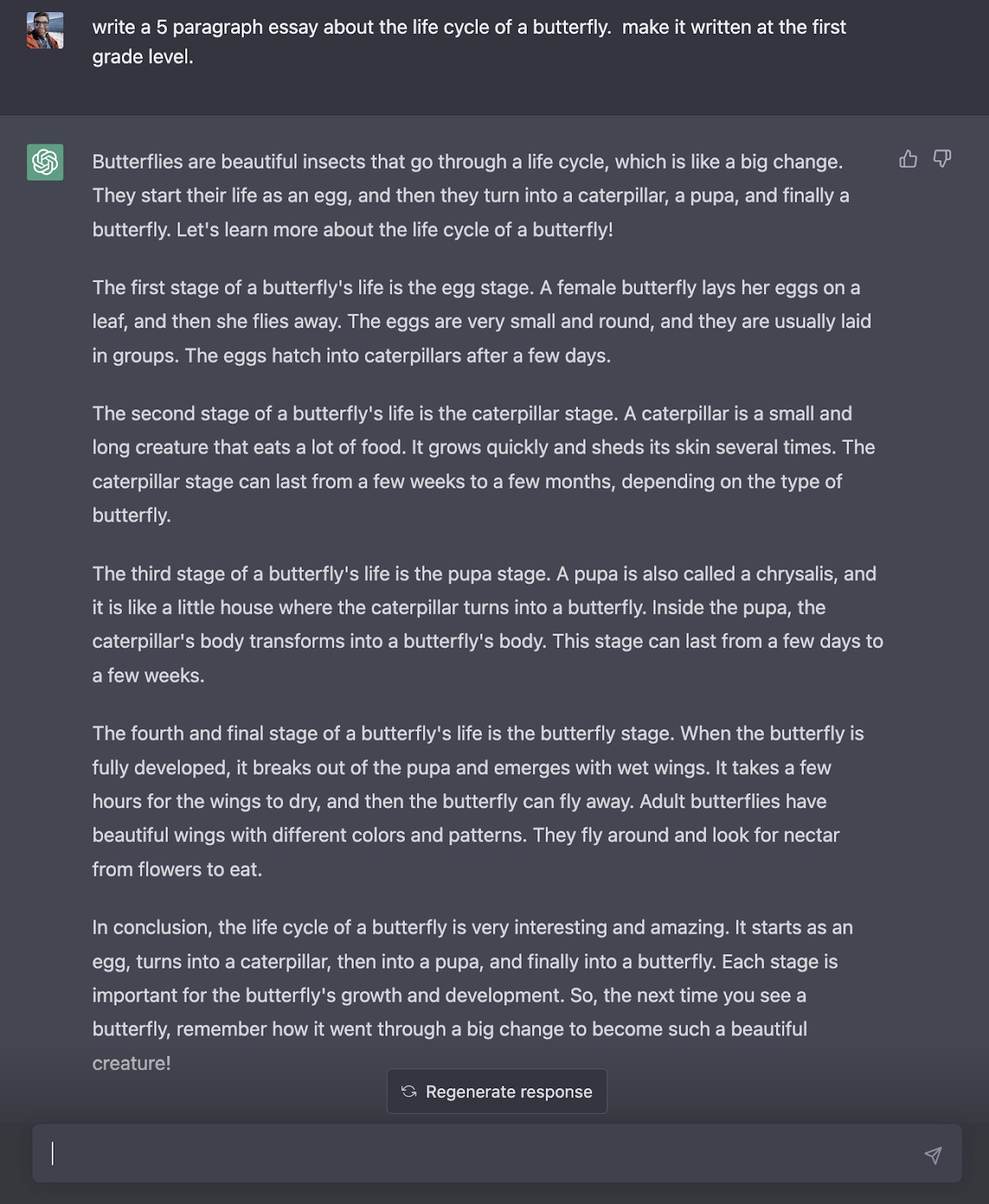
He used the output from ChatGPT to create a photo essay for his students about the butterfly life cycle. Once he had the content, he added the text to a Google Doc and paired it with some beautiful images. And just like that, he had some killer new teaching material for his next session.
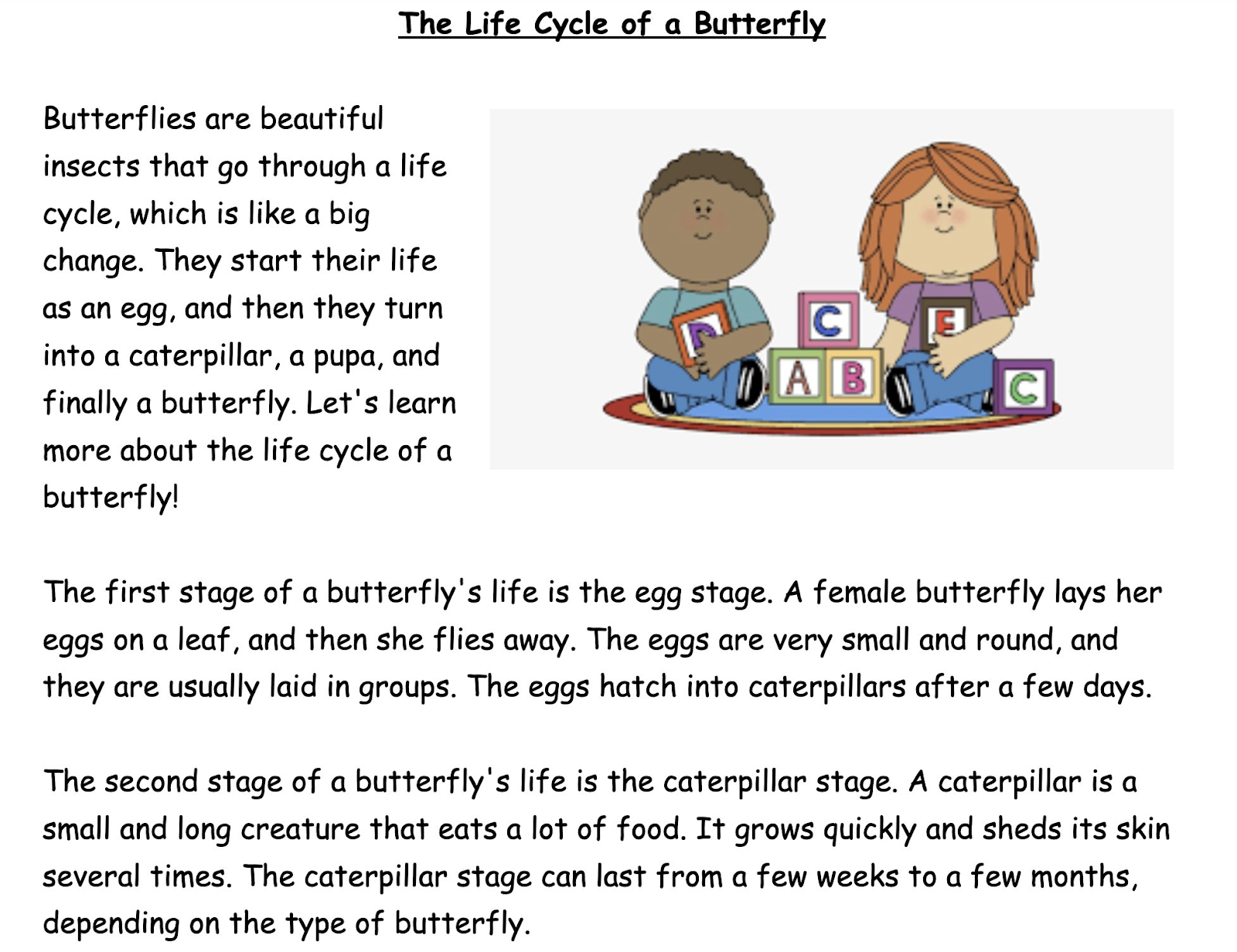
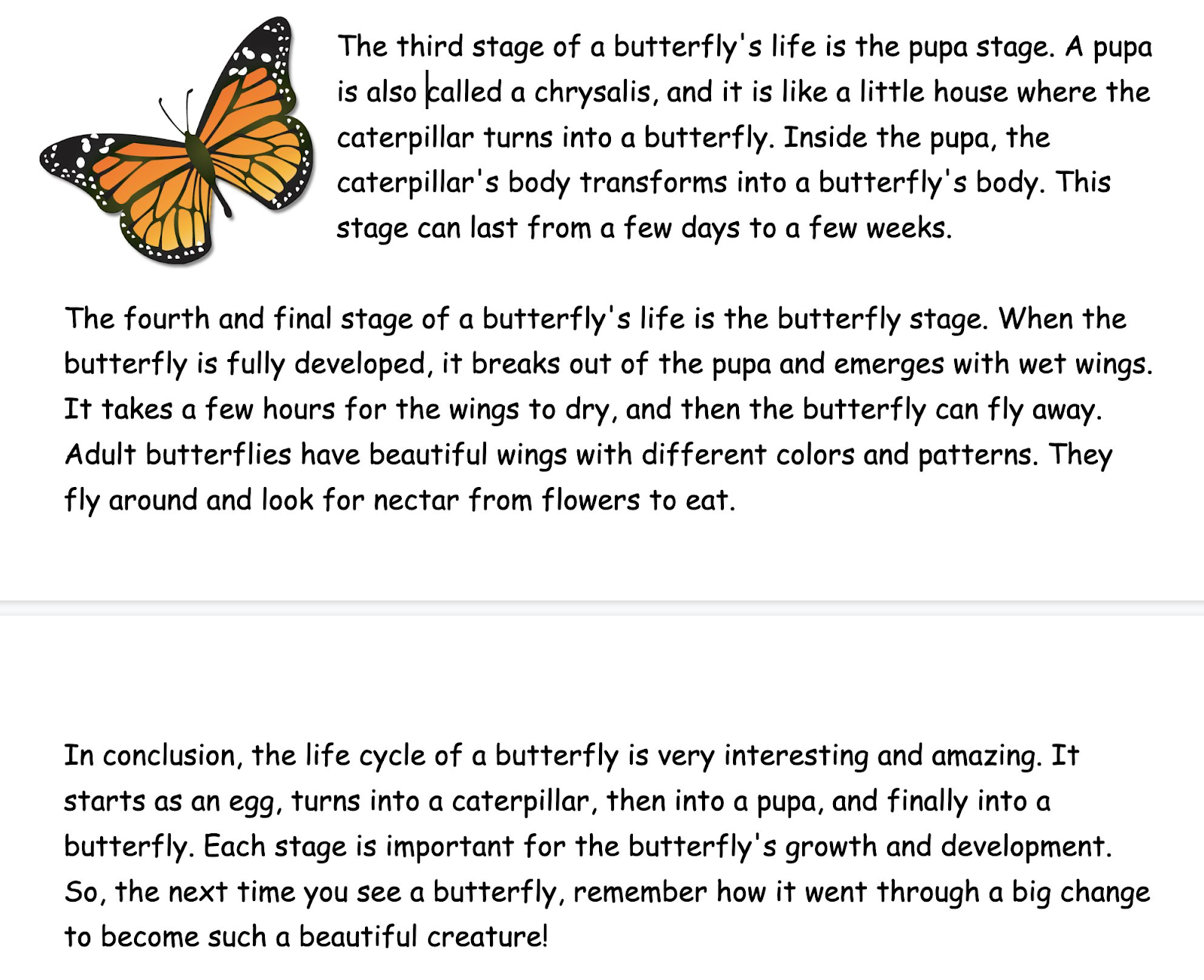
Donnie knows that time is precious. He could generate the content he needed for his photo essay in just one minute using ChatGPT. Sadly, he had to spend the next nine minutes trying to find the right image to accompany the content. But in the end, it was worth it.
Develop engaging activities for student learning
Donnie has always been looking for ways to make learning fun and engaging for his students, and he knows that ChatGPT is a great tool for unlocking their creativity. So, he decided to bring ChatGPT into the classroom and let his students generate their own play using AI and their own imaginations.
He gave his students a template with some blanks to fill in, and then they put the completed template into ChatGPT to generate a script that connects everything together. It's an awesome way to combine the power of technology with the creativity of his students.
Let's walk through the step-by-step process that Donnie used to make this happen:
Donnie gave his students a template for a play with some blanks to fill in.
Students used their own creativity to fill in the blanks and create a unique story.
They put the completed template into ChatGPT to generate a script that ties everything together.
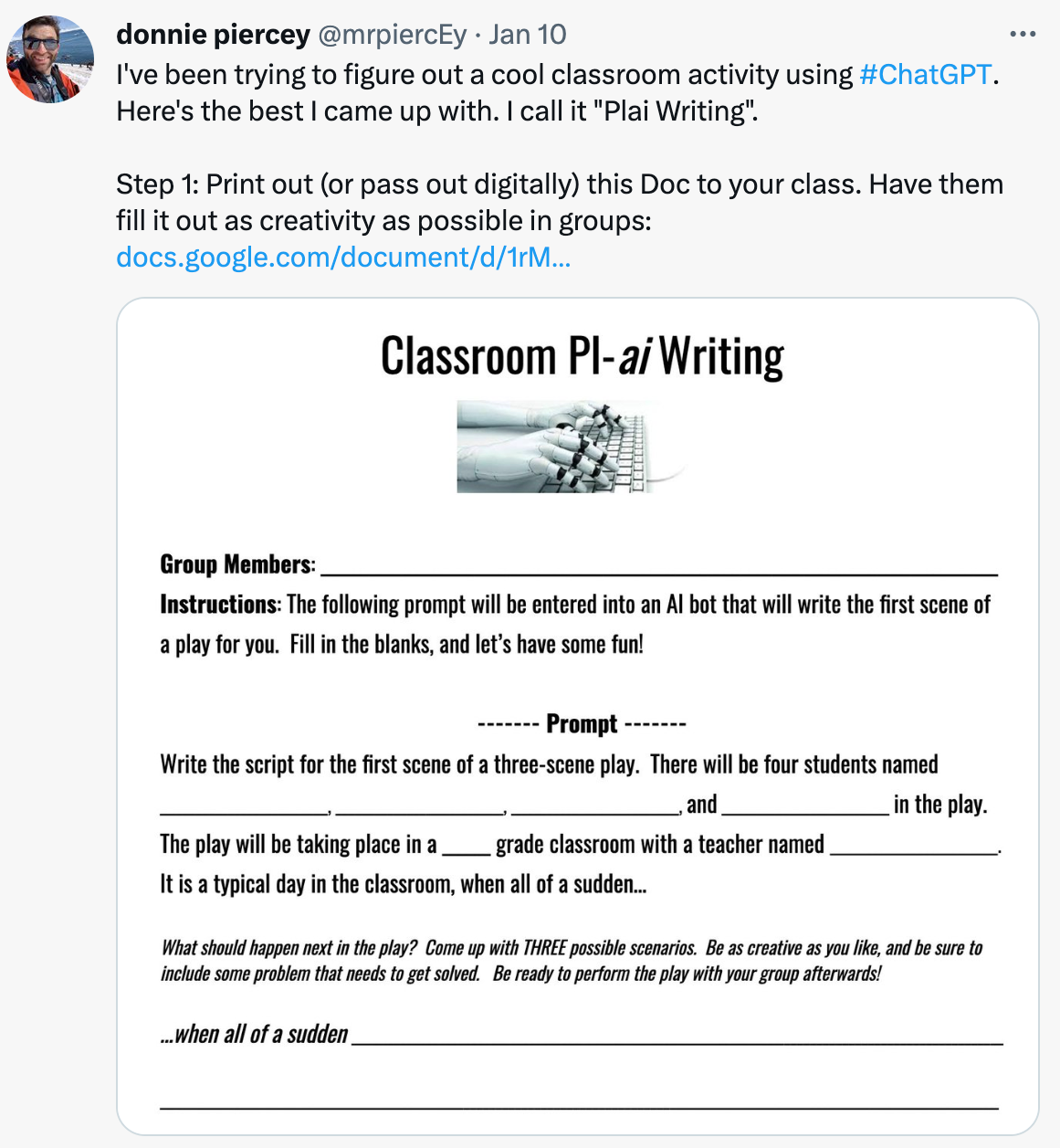
Input Prompt: Write the script for the first scene of a three-scene play. There will be four students named Javier, Jack, Diane, and Olivia in the play. The play will be taking place in a 5th-grade classroom with a teacher named Mr. Piercey. It is a typical day in the classroom when all of a sudden a group of time-traveling aliens trying to find all of the cheese in the world walks in the classroom door. Hilarity ensues.

Input Prompt: Write the second scene

Input Prompt: Write the final scene
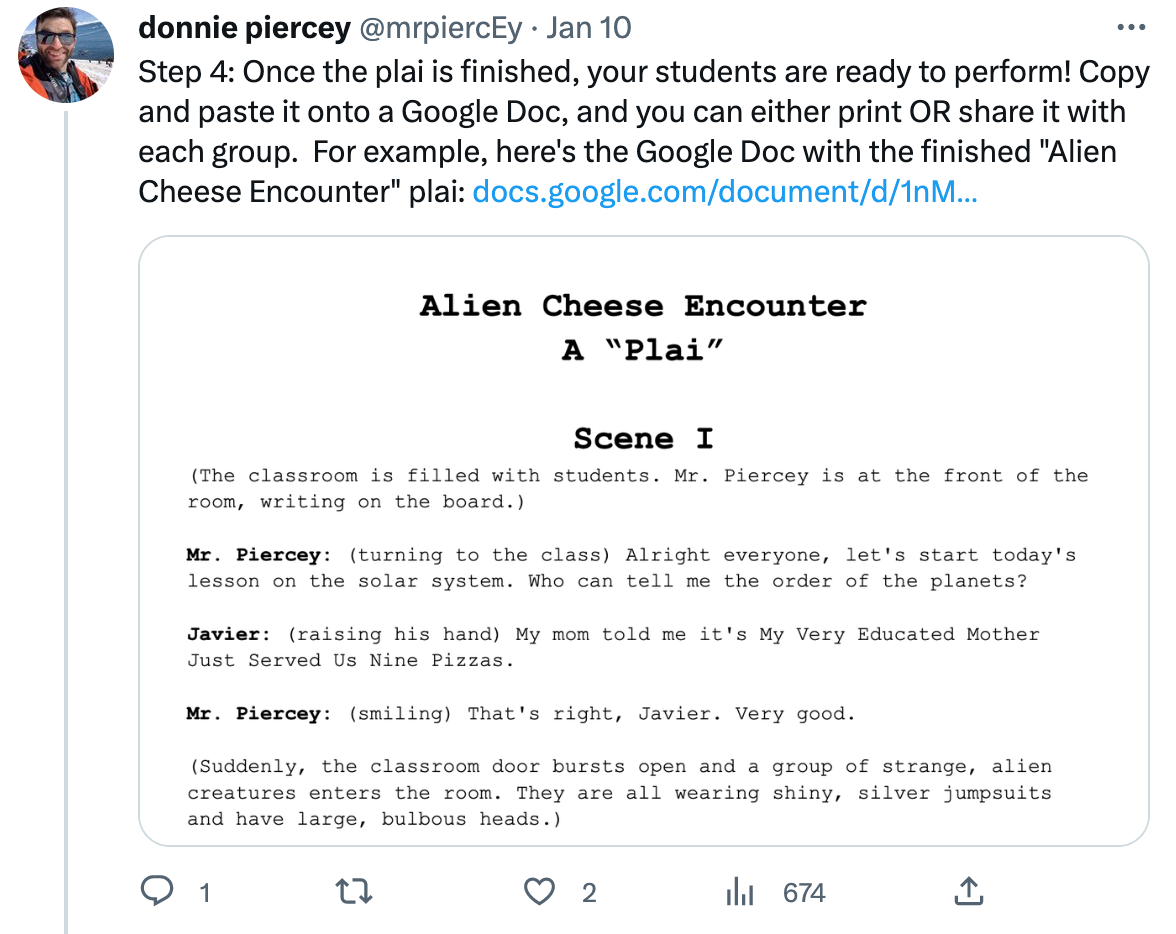
Grading and feedback for individualized learning
Donnie was curious to see if ChatGPT could evaluate the answers written by his students. So, he made a wish to try out this experiment in his classroom.
Input Prompt: Read this Rubric. I am about to have you grade some student work using it. Explain to me why you grade each piece as you do. Do you understand?

ChatGPT responded with following:

Donnie copied and pasted the student’s work, trying to get ChatGPT to evaluate it. The results came back faster than expected.

Student Work:
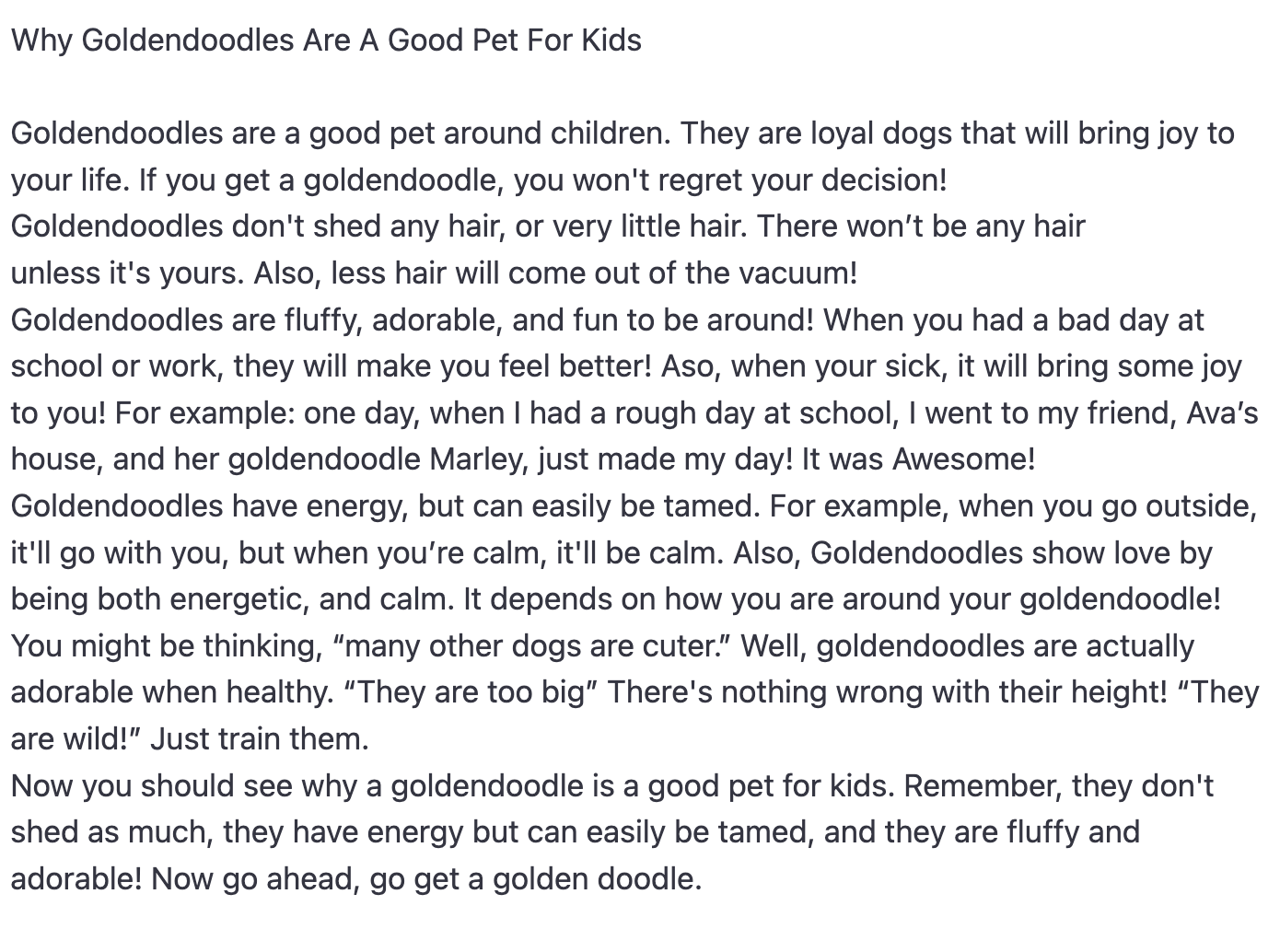
ChatGPT Evaluation Result:
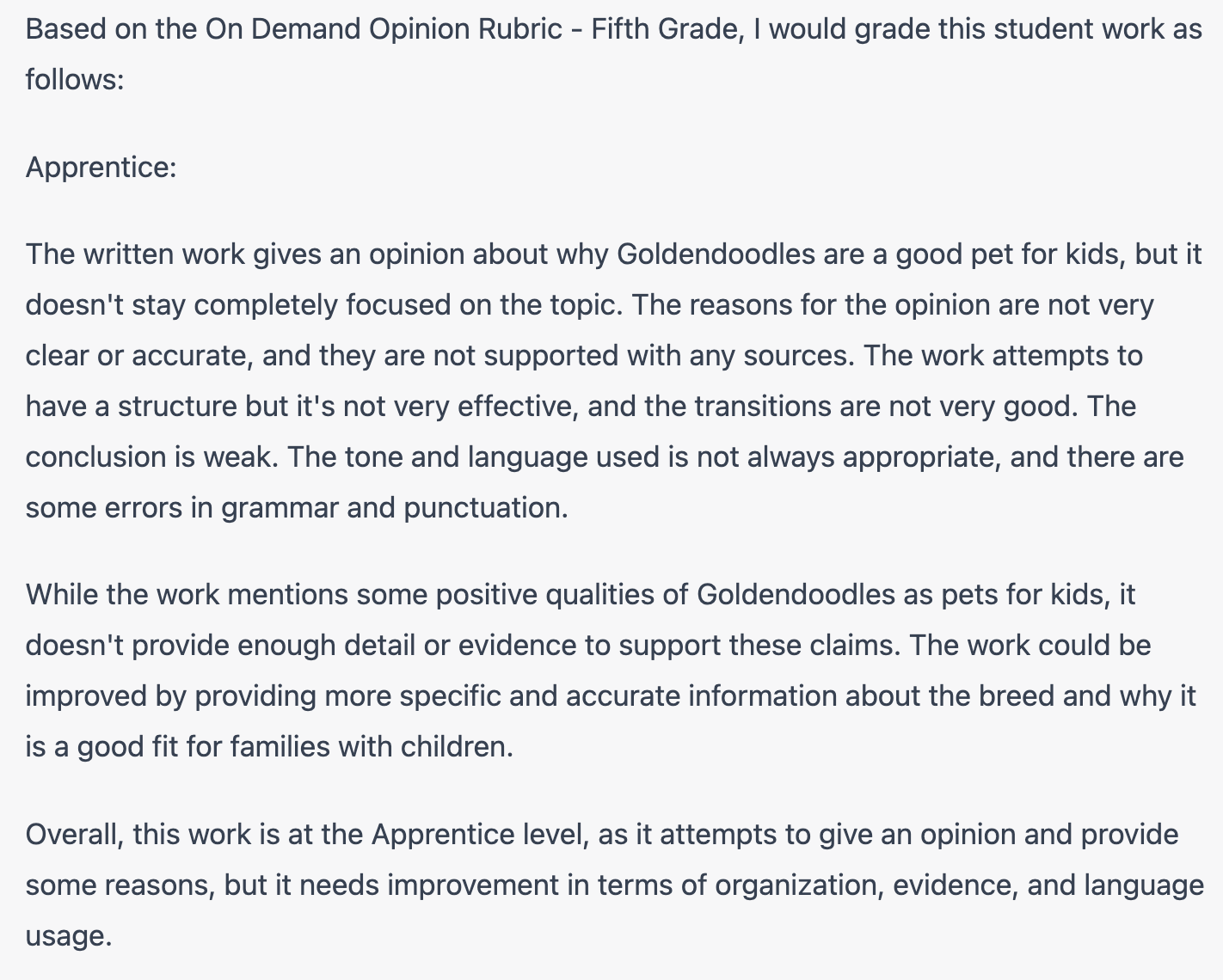
Donnie summed up his experience with ChatGPT in one sentence:

ChatGPT Helps Teachers Write Data Tables
Donnie decided to put ChatGPT to the test and see if it could handle tables. He entered a prompt to generate a table. Surprisingly, ChatGPT created one and organized it quite well.
Input Prompt: On a table that I can copy onto a google sheet, give me some information about all the presidents of the US, how long they were president when they were born, and which political party they were affiliated with
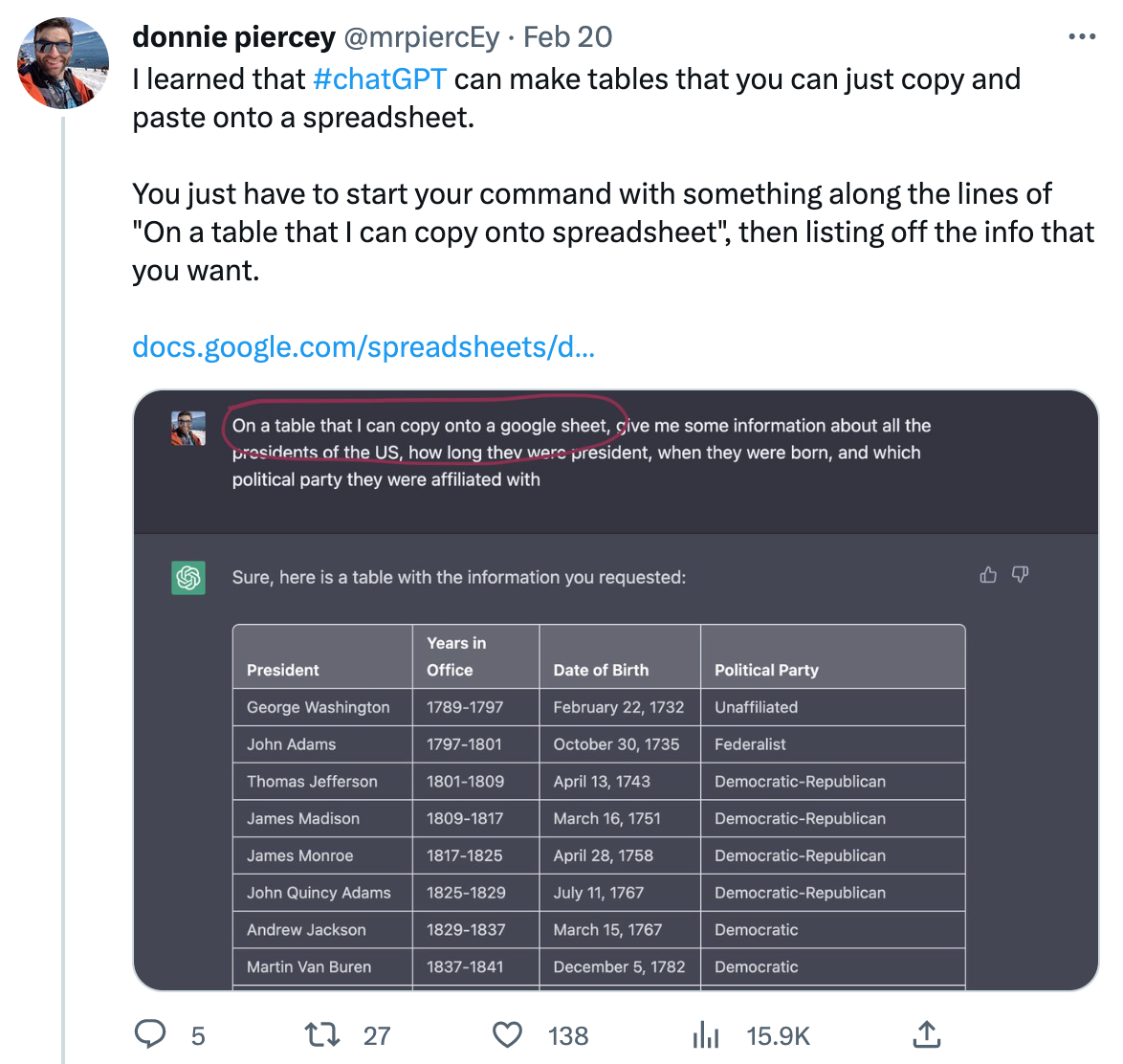
Input Prompt: Keep writing
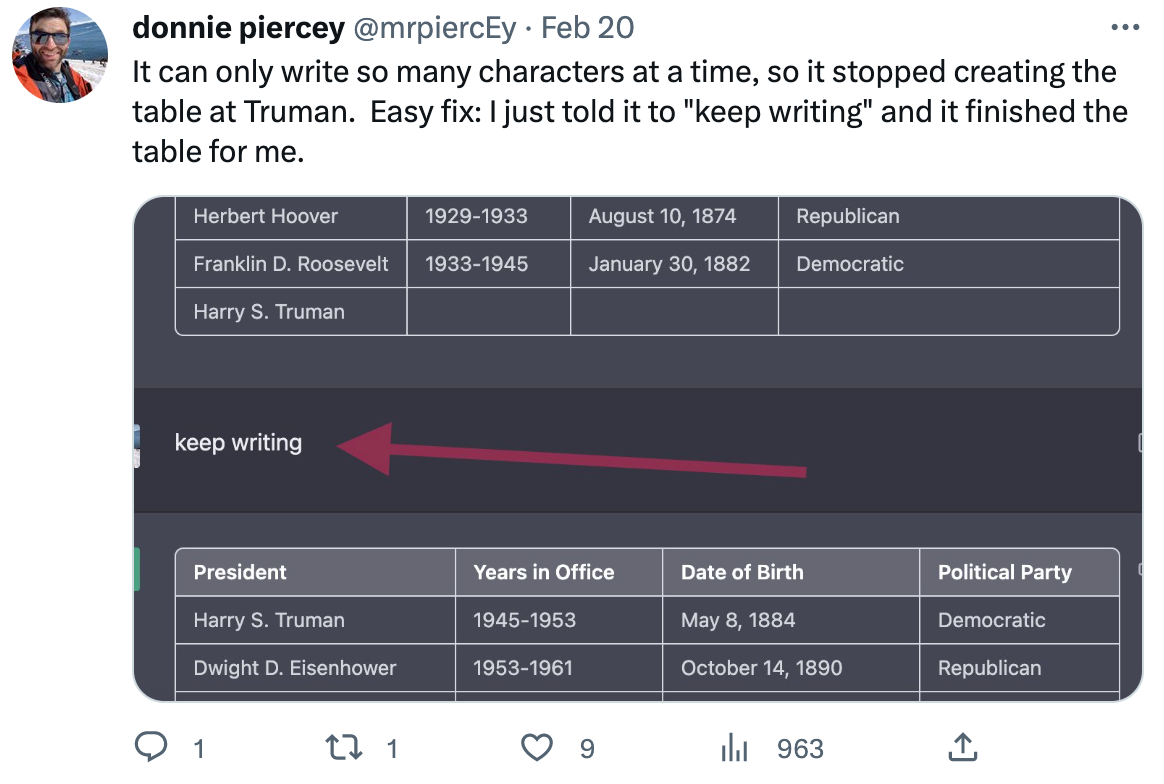
So in the end, ChatGPT was able to prove its talent with a lot of possibilities in the field of education. But, you always need to provide oversight to make sure it's doing what you want it to do.
Further Reading
AI for Teachers: Curriculum Planning, Lesson Design & Grading
Benefits of AI in Education: Integrating AI into Teaching and Learning
If you're curious about how AI can change the face of primary education, then you should check out Donnie's Twitter handle @mrpiercEy, LinkedIn profile, or visit his website to stay updated on his work!
Donnie’s experiments with ChatGPT came to light in an interview with Fortune which you can read here: ‘It’s coming, whether we want it to or not’: Teachers nationwide are using ChatGPT to prepare kids for an AI world